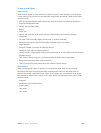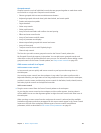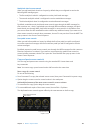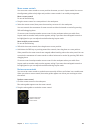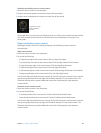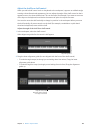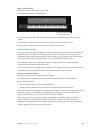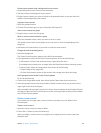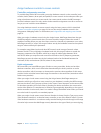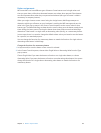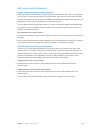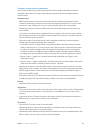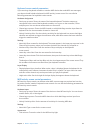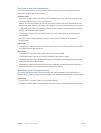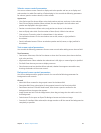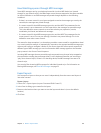Chapter 7 Work in Layout mode 111
Assign hardware controls to screen controls
Controller assignments overview
To use MainStage with a MIDI controller, you assign hardware controls on the controller (such
as faders, knobs, buttons, drum pads, and pedals) to screen controls in the workspace. After you
assign a hardware control to a screen control, the screen control receives the MIDI messages
from the hardware control. You only need to make controller assignments once for a concert as
long as you use it with the same hardware.
You assign hardware controls to screen controls using the Learn process, which is described
in Learn a controller assignment on page 34. You can also assign hardware controls in the
Assignments & Mappings table. For information, see Assignments and mappings overview on
page 76.
When you assign a hardware control using the Assign button, MainStage determines the type
of MIDI message the control sends when you move it and the range of values the control is
capable of sending. When you map the screen control to a channel strip parameter or an action,
MainStage converts (or “maps”) the range of values sent by the hardware control to the optimal
range of values usable by the parameter.
For example, many faders, knobs, and other MIDI controls send a range of numeric values
between 0 and 127. You could map a hardware knob with this range of values to control the
frequency parameter of an EQ eect, which has a range of usable values between 20 Hz
and 20 kHz. When you map the screen control for the knob to the EQ frequency parameter,
MainStage converts the values sent by the hardware knob to be distributed between the
minimum (20 Hz) and maximum (20 kHz) values for the parameter.
Knob assignments
MIDI controllers can have dierent types of knobs or rotary controllers. Knobs can be either
absolute controllers, which send a xed value determined by the knob’s position or can be
relative controllers, which increment or decrement the previous value regardless of their exact
position. Knobs can either have a xed range of movement or be continuous (sometimes called
endless rotary encoders).
When you assign a knob screen control using the Assign button, MainStage attempts to
determine which type of knob or rotary control on your hardware is sending the MIDI message
and sets the value in the Type pop-up menu in the Screen Control Inspector to the correct value.
For absolute controllers, the correct value is Absolute; for relative controllers, the correct value
can be either Relative (2’s complement) or Relative (Sign magnitude), depending on the type of
relative controller. In most cases, there is no need to change the default values unless you intend
to use the knob for a specic, non-standard purpose.
When you assign a knob screen control, be sure Absolute is chosen from the Type pop-up menu
if the hardware controller is an absolute rotary controller, or one of the Relative values is chosen
if the hardware controller is a continuous rotary encoder. Moving the knob through its full range
of motion helps ensure that MainStage correctly determines the type of knob you are assigning.



